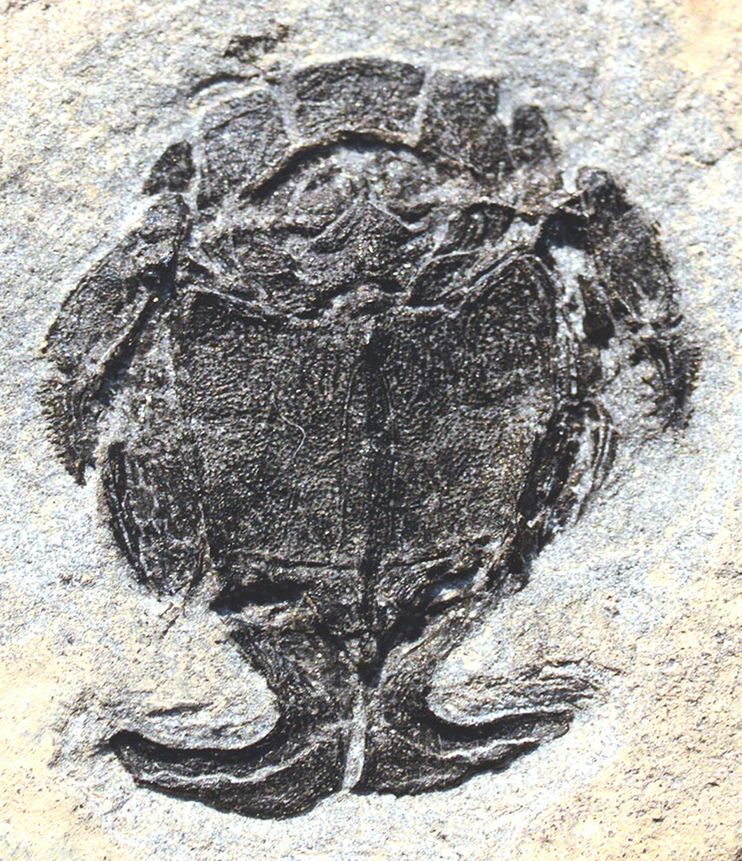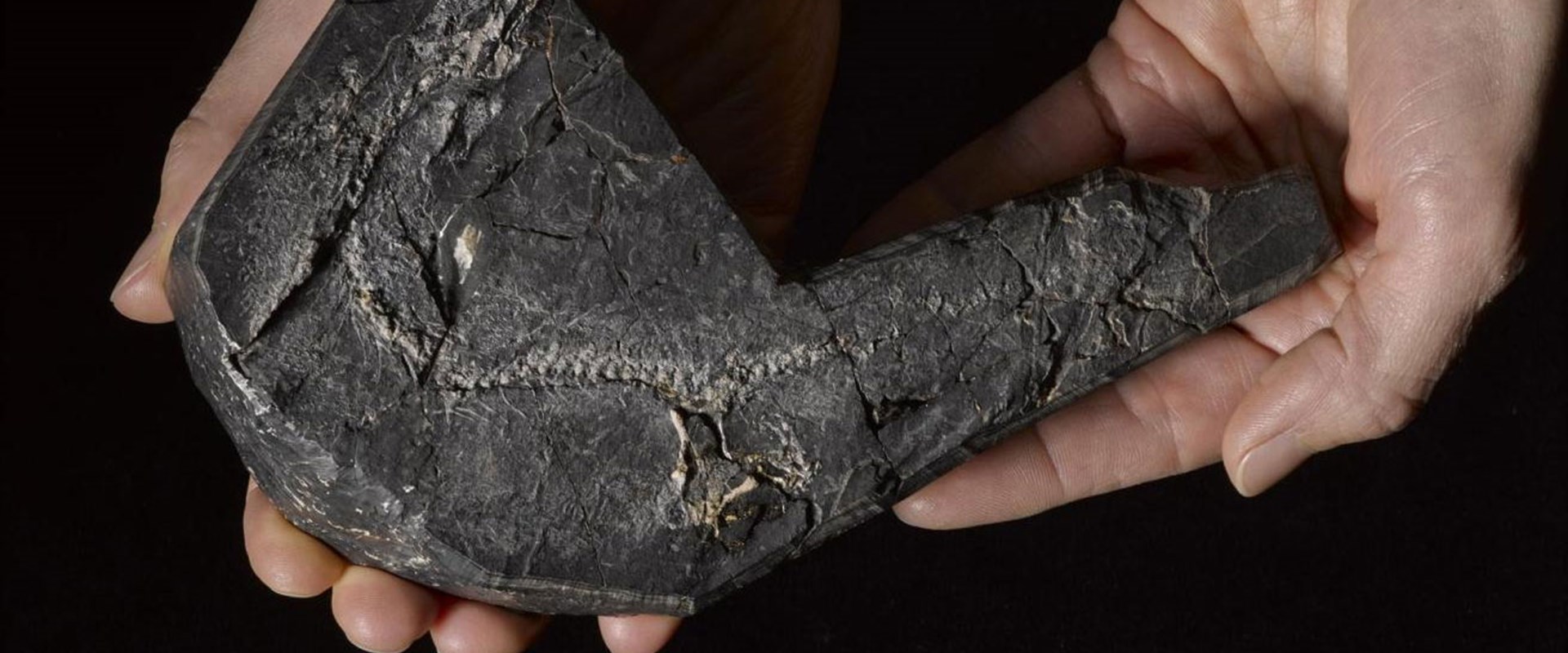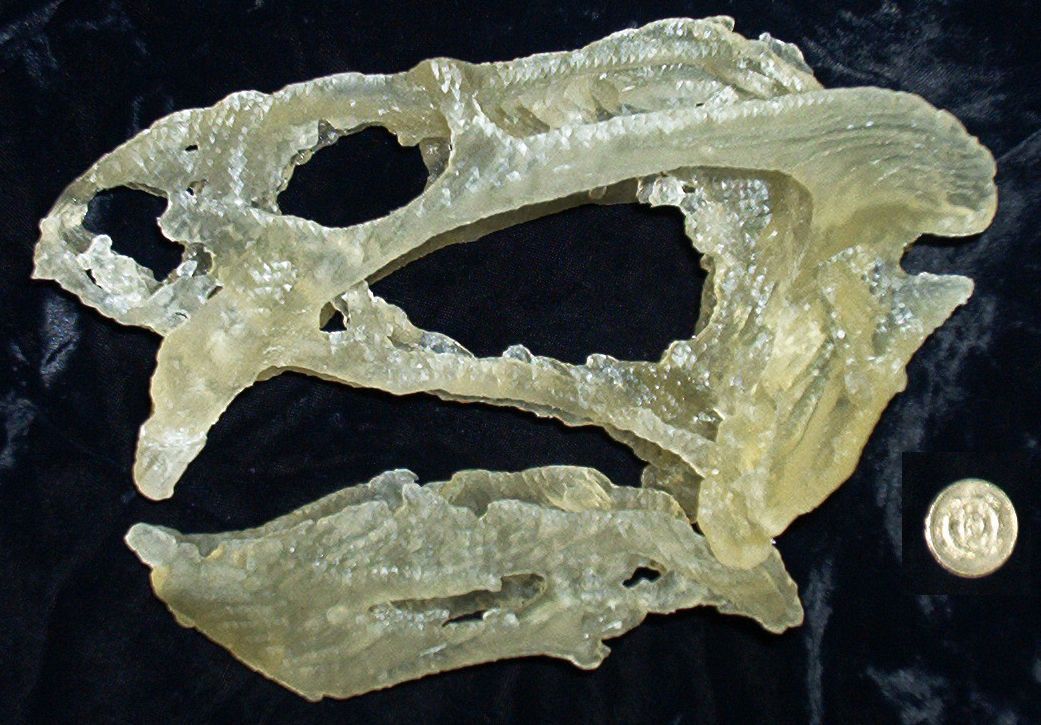SCOTLAND THE (B)OLD?Scotland has its full of oddball things and in future issues we may have some information on them. The unicorn is the National animal (what?!?!?! Not Nessie???). I am not sure how many countries have fictional animals as their national animal but then, why not? However, it might have been more fun to have a prehistoric animal as a national animal. So here are some “prehistoric critters” found in Scotland that might be fun to have as a national fossil. Let’s start with an oldie: Microbrachius dicki This little fish would make a nice national fossil. The fish, some 385 million old, swam in the waters where Scotland would be. The fish, a mere 8 cm. long (a little over 3 inches- no comment) is the animal that reproduced by having sex rather than spawning. So for some, the origin of sex is in Scotland. Hoot man! Westlothiana lizziae No this is really neat animal. “Lizzie” as the fossil is affectionately known was thought to be the oldest reptile – it looks sort of lizard like. Some people thought it might be an amphibian rather than a reptile. Lizzie was found East Kirkton quarry, Bathgate, West Lothian. It is thought to be about 345 million years old. There is a discussion about whether or not the animals found from this time period in Scotland and the first to have begun to colonize the land. So it may be the earliest 4 legged animals appeared in Scotland Elgin Reptiles A large number of fossils have been found in Elgin in Moray. These include many archosaurs, or “ruling reptiles” and some of their relatives who are the animals that will evolve into the dinosaurs, crocodiles and alligators and so on. There are many different species found here so you can take your pick as to which is your favorite and nominate that for the National Fossil. Among the choices would be the Sphenodontid known as Brachyrhinodon; the Procolophonid Leptopleuron; the Dicynodonts Gordonia and Geikia and the pareiasaur known as Elginia. All those Scottish fossils and not a “Mac” in the lot! There are a large number of fossils and footprints found around Scotland. Dr. Steve Brusatte of the University of Edinburgh has listed 10 of Scotland top fossil discoveries. Some are animals and some are plants and some are footprints. Footprints are generally called “trace fossils” and it is not clear whether someone would want to have a “trace fossil” as one’s national fossil. Some fossils are plants, and these of course are acceptable as national fossils although it might be more reasonable to have a national fossil animal and a national fossil plant. According to Dr. Brusatte’s, two of top fossil discoveries are on Skye. These include both dinosaur tracks as well as actual dinosaur bones. The tracks are those of the long necked dinosaurs like diplodocus. There are also some tracks in Staffin of some dinosaurs related to the ever-popular Tyrannosaurus rex. In addition to dinosaur bones, some bones of other reptiles of the period have been found there as well. In the borders areas, a number of graptolites have been found at Dobs Linn. These are peculiar animals which live in colonies but are surrounded by a single shared skeleton. They have been likened to a little apartment house with each animal having its own apartment. They belong to a phylum called “hemichordata”. More simply, they seem to be related to animals like starfish. The Rhynie chert has been discussed in early issues of the Scotia News (Vol. 5, issue#2 March 2012). It involves a 410 million year old exposed bit of land where some of the earliest plants made a move onto the land from the water. The Rhynie chert is in Aberdeenshire Some 419 to 358 million years ago, there were many Devonian fish to be found in the waters that covered much of Scotland during the Devionian period. Fossils of these Devonian fish called placoderms (one of the early fish with jaws and with something of an articulated armored plates covering the head and thorax) can be found in several places like Caithness. A prehistoric kind of eel-like animal has been found in materials from Granton Harbour in Edinburgh. This find finally identified the organism from which many teeth had been found, but no other part of the animal. The teeth were known as conodonts and date from about 500 million to 200 million years ago Some other important finds are less like to be considered as a national fossil – unless one has a weird offbeat sense of humor. Brusatte’s list, contains the Wardie coprolites, (fossilized dung) found near Edinburgh in his ten great discoveries, but somehow it is likely this would not come in first in a list of fossils chosen for a national fossil. Certainly the Bearden Shark would score higher. The Bearden shark (north of Glasgow) was about 1 meter long and is called Akmonistion – a name that almost looks Pharonic! Fossils are really great fun. In America there is even a National Fossil Day in October. There are so many fossils from Scotland that one might suspect it would be a nice idea for each “shire” to have its own “shire-fossil” as well as a national fossil. After all for a country that has a unicorn – a fictional animal for a national animal it should behoove the Scots to find a way to fit in a couple of real ones even if they are extinct. |


